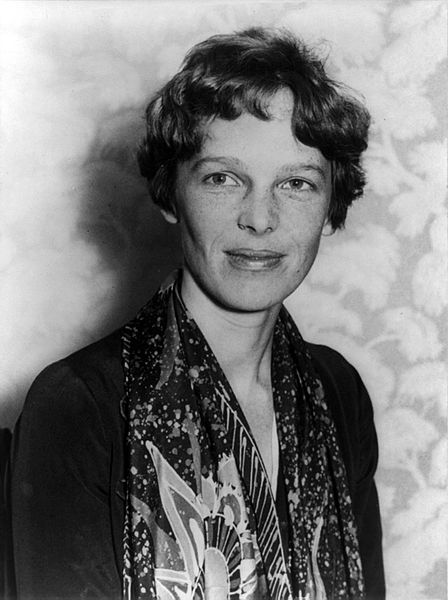
Public Domain (U.S. Library of Congress digital ID# cph.3a22092)
On 20 May 1932, five years after Charles Lindbergh made his famous solo nonstop flight from the U.S. to France, Amelia Earhart set out to be the first female aviator to accomplish the same feat. Unlike Lindbergh, Earhart was already well known before this flight. She gained fame in 1928 as part of a three person crew to be the first woman to cross the Atlantic in an airplane. On that trip, she kept the plane’s log.
Early on 20 May 1932, her Lockheed Vega 5B took off from Harbour Grace, Newfoundland. She intended to replicate Lindbergh’s flight but encountered strong northerly winds, mechanical problems, and icy conditions. Instead of landing in France, she landed in a pasture at Culmore(north of Derry)in Northern Ireland. When asked by a farmhand how far she had flown, she famously said “From America.” Her feat received international acclaim. She received the Distinguished Flying Cross in the U.S., Cross of Honor of the Legion of Honor from France, and the Gold Medal from the National Geographic Society. Her fame allowed her develop friendships with many important and influential people such as First Lady Eleanor Roosevelt.
Earhart would continue to make solo flights and set records. Sadly her next most famous mission would forever be shrouded in mystery. In 1937 she attempted–along with copilot Frederick Noonan–to fly around the world. On 2 Jul 1937, her plane disappeared near Howland Island in the South Pacific. Despite extensive searching by the U.S.Navy and Coast Guard, no trace of the plane or its pilots were ever found. The search was called off on 19 July. Earhart was declared legally dead on 5 Jul 1939 so that her estate could pay bills. Since then numerous theories as to what happened have been put forth. Many believe her plane either crashed and sank or that they landed on an island and perished awaiting rescue. Some intriquing evidence recovered in 2012 off Nikumaroro might be from their plane which supports the crash and sank hypothesis. More speculative theories have her being a spy for FDR or being captured and executed (along with Noonan)by the Japanese on Saipan (the area checked for the pilots bodies revealed nothing). A 1970 book claiming she had survived, moved to New Jersey, and changed her name to Irene Craigmile Bolam. There really was an Irene Bolam who had been a banker in New York in the 1940’s. She sued the publisher and obtained an out-of-court settlement. The book was taken off the market. National Geographic throughly debunked it in 2006 on Undiscovered History.
Sources
Mullen, Matt. “Amelia Earhart Becomes the First Woman to Make Solo, Nonstop Transatlantic Flight.” HISTORY, 19 May 2021, www.history.com/this-day-in-history/earhart-completes-transatlantic-flight.
—. “Amelia Earhart | Biography, Childhood, Disappearance, and Facts.” Encyclopedia Britannica, 18 Apr. 2024, www.britannica.com/biography/Amelia-Earhart.
—. “Amelia Earhart.” Biography, 30 Jan. 2024, www.biography.com/history-culture/amelia-earhart.
“Amelia Earhart.” National Air and Space Museum, 28 Sept. 2021, airandspace.si.edu/explore/stories/amelia-earhart.










